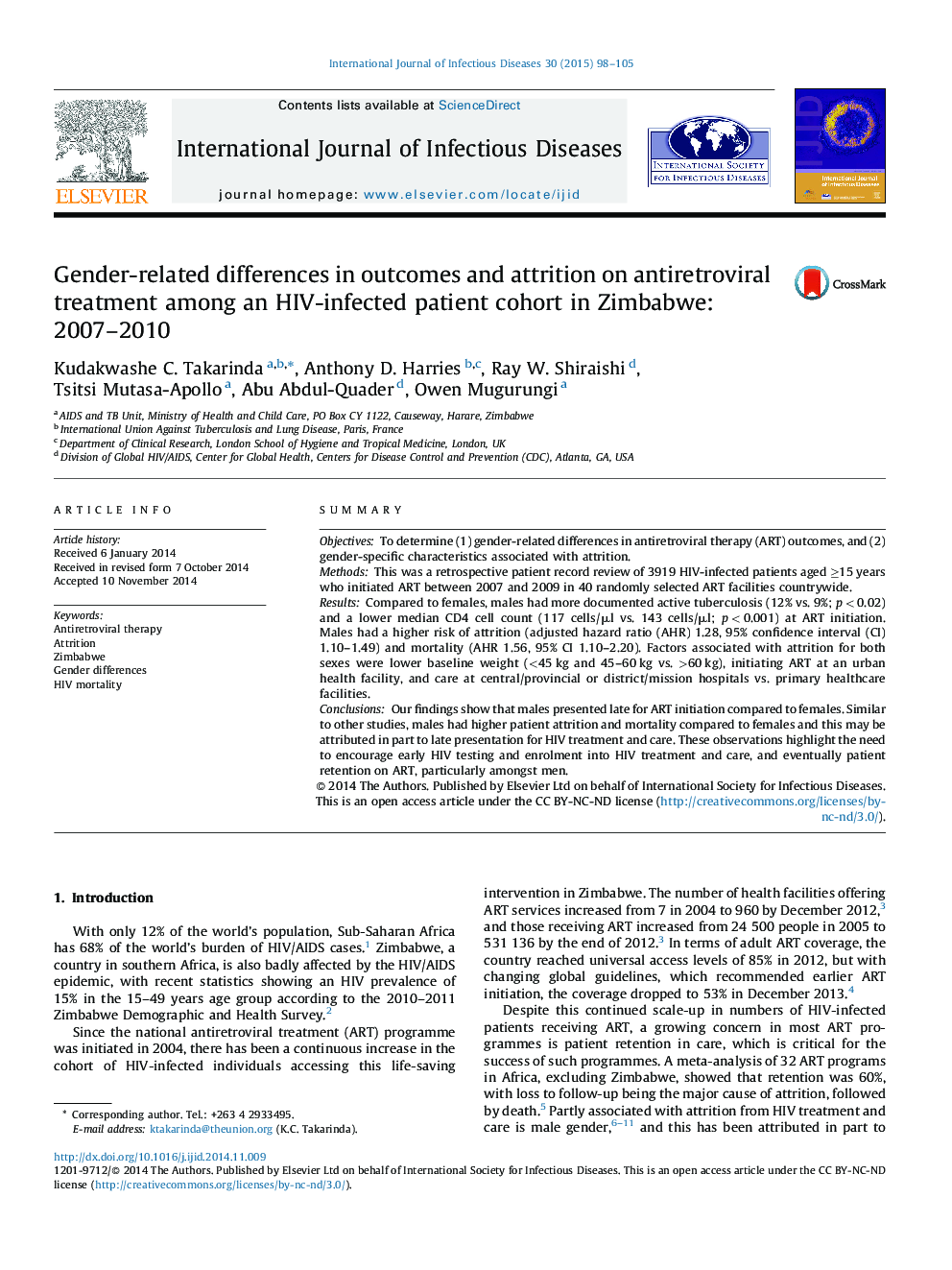| Article ID | Journal | Published Year | Pages | File Type |
|---|---|---|---|---|
| 3362287 | International Journal of Infectious Diseases | 2015 | 8 Pages |
SummaryObjectivesTo determine (1) gender-related differences in antiretroviral therapy (ART) outcomes, and (2) gender-specific characteristics associated with attrition.MethodsThis was a retrospective patient record review of 3919 HIV-infected patients aged ≥15 years who initiated ART between 2007 and 2009 in 40 randomly selected ART facilities countrywide.ResultsCompared to females, males had more documented active tuberculosis (12% vs. 9%; p < 0.02) and a lower median CD4 cell count (117 cells/μl vs. 143 cells/μl; p < 0.001) at ART initiation. Males had a higher risk of attrition (adjusted hazard ratio (AHR) 1.28, 95% confidence interval (CI) 1.10–1.49) and mortality (AHR 1.56, 95% CI 1.10–2.20). Factors associated with attrition for both sexes were lower baseline weight (<45 kg and 45–60 kg vs. >60 kg), initiating ART at an urban health facility, and care at central/provincial or district/mission hospitals vs. primary healthcare facilities.ConclusionsOur findings show that males presented late for ART initiation compared to females. Similar to other studies, males had higher patient attrition and mortality compared to females and this may be attributed in part to late presentation for HIV treatment and care. These observations highlight the need to encourage early HIV testing and enrolment into HIV treatment and care, and eventually patient retention on ART, particularly amongst men.
